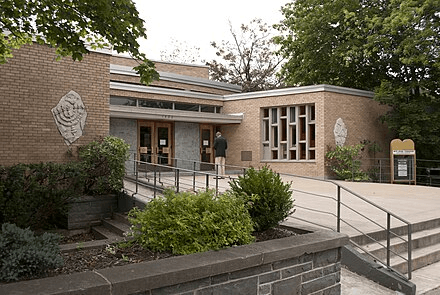Rabbi Nachman of Breslov (1772-1810) was the founder of the Breslov Hasidic movement. His writings, which drew on Kabbalah and Eastern European folktales, taught Jews to be close to G-d, to speak to him as you would a good friend.
Likkutei Moharan is one of the most well known and well studied resources on his thought. It was compiled by R. Nachman's student, Rabbi Natan, and was published after his death. In the 65th sermon of his collection Likkutei Moharan, he discusses prayer and meditation. It begins as a commentary to Boaz’s words to Ruth: “Hear me well, my daughter. Do not go to glean in another field, and do not pass on from here…. Keep your eyes on the field that they are reaping, and follow them (Ruth 2:6-8)”. After drawing out the poetic landscape of wandering in a field, R. Nachman then affixed this Jewish prayer to give ideas on how to find meaning in prayer.
A person who is praying, walks through the prayer from letter to letter, until multiple letters connect and form a word. They do the same with whole words, and join them together. They then wander onwards and gather more, until they finish one blessing. They gather more and more, and wander from the blessing on the patriarchs to the blessing on the powers to the blessing on the holiness, and so they walk onwards. And when a word emerges, it begs and implores from the soul to not part from it. And thus the rule is that one needs to unite the entire prayer. And in each utterance that emerges, all the words of the prayer, from the beginning until the end will be found, as a unity. And when one is at the last word of the prayer, they will still stand in the first word of the prayer.
On the literal level, R. Nachman’s teaching touches only on prayer. However, by generalizing R. Nachman’s teaching to also include meditation and spiritual experience, a deeper idea is revealed.
Spiritual experiences are often described as a leap into the realm of the divine, where self-consciousness and self-identity vanishes. R. Nachman also asserts this view in Sichot Haran: “You must then make yourself like nothing. Anyone can do this. Close your mouth and your eyes and don't think about anything–as if you have no mind and no thoughts. You are completely nullified before God” . Consequently, spiritual experiences can not be described, predicted, or reproduced using the familiar language or logic that we use to describe our day-to-day reality.
These spiritual experiences can’t be explained in terms of ordinary, logical reasoning. They operate on a deeper, more transformative level, altering one’s perception of time. They retroactively recreate the past events in one’s life that caused these experiences to happen and begin to orient the mind toward what R. Nachman calls the state of “being nullified by God.” Once one has a certain spiritual experience (or in the literal terminology of R. Nachman’s teaching, once one recites a phrase in a prayer), the sense of such an experience has implications on both past and future experiences. As the experience of meditation changes the past, it causes you to reinterpret past events such that you view them as being the causes of your current spiritual experience. As it changes the future, it sets up future possibilities for similar meditative experiences. Meditative experiences allow us to change, and they help us relive and rethink the meaning of past experiences and emotions. As R. Nachman put it, once one reads the last word of the prayer, he is at the same time standing before the first word of the prayer.
The sages of the Talmud also denote the atemporal or, rather, the cross-temporal nature of spiritual and meditative experiences. In an agadata (Talmudic short story) which narrates an encounter between God and Moses, Moses is worrying about the future. In turn, God sends Moses 1500 years ahead to the time of Rabbi Akiva using the phrase “חזור לאחוריך” or “backtrack to your whereabouts from before,” (Babylonian Talmud, Tractate Menachot, 29b). Instead of talking about the future using the future tense, the language of the story, which uses both phrases that describe the future tense and the past tense, highlights the temporally intertwined nature of novel spiritual events.
R. Nachman teaches that in meditating and forming our future prayers, our past utterances and words re-emerge in our cognition. Rosh Hashanah and the Days of Awe are often thought of as opportunities to set goals for the upcoming year. Not so differently, many use it as a time to contemplate what traits and behaviours they want to change. As much as the High Holy Days are a step into the future, their spiritual weight is also a chance to “backtrack to our whereabouts from before” and to relive past formative experiences and reevaluate what they mean to us.






